Submitted by Antonello Magliozzi
Saving our Planet, the forth industrial Revolution at Ecomondo 2018
Italy Architecture News - Nov 02, 2018 - 03:22 5572 views
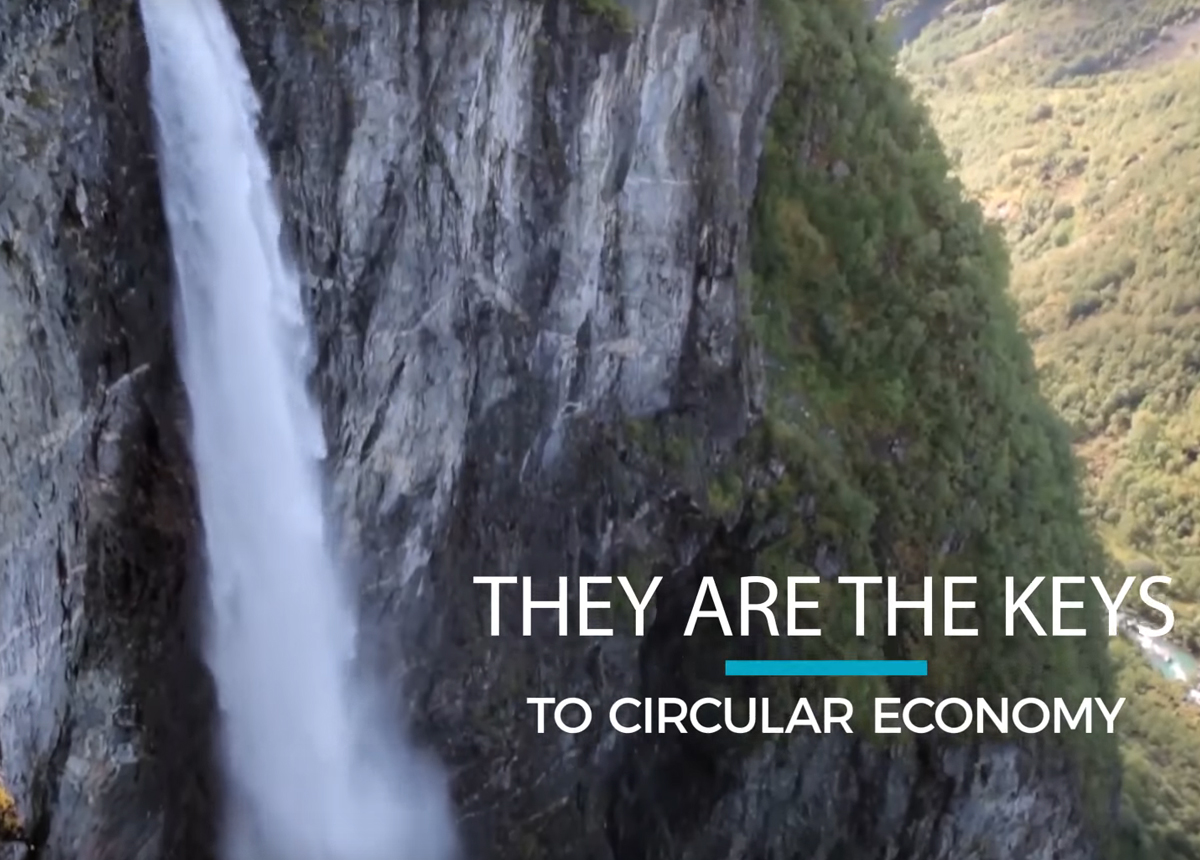
Environmental protection and circular economy are key words of the current Italian cultural and political scene. The effects of climate changes, environmental disasters, collapses of territories that we live and see so devastated are indeed national emergencies on the order of the day. Nowadays storms are scourging Italy, from Trentino to North of Piemonte, from Liguria to Veneto, South Italy included, are determining victims and damages estimated in billions of euro, representing the umpteenth alarm bell, a fact less and less extraordinary. An emergency that does not only concern a near future, but a tangible present. An urgency that certainly today requires fast solutions to protect and safeguard the territory and human lives, but which mainly highlights the lack of programmatic interventions extended to the whole environment, to all the energies and resources of our planet. The need for a environmental planning with a holistic approach, that one of the circular economy, with projects aiming at long-term self-generating perspectives, with solutions that consider with one voice the social, environmental and economic needs: those can be defined as "the triple bottom line". A vision in these days represented in the most important Italian fair for the environment, a landmark appointment on the international scene: Ecomondo 2018.

Image © #rischioidrogeologico
Second place in Europe for research and innovation in the environmental sector, Italy presents in Rimini from 6 to 9 November the 22nd fair on green technologies: Ecomondo 2018. Leading fair of the green and circular economy in the Euro-Mediterranean area, an international event with an innovative format that combines in a single platform all sectors of the circular economy: waste and resources, circular bioeconomy, drainage and hydrogeological risk, water, chemical analysis and monitoring, energy, circular city and mobility. 1,300 leading companies in the environmental market presenting the trend in the various sectors, innovations and new technologies in the climate business. Also present at annual meeting of Italian green economy the States General of the Green Economy, composed by 66 business associations - in collaboration with the Ministry of Environment, that has become the point of reference for thousands of green companies, involving between 2012 and 2018 more than 7500 stakeholders.
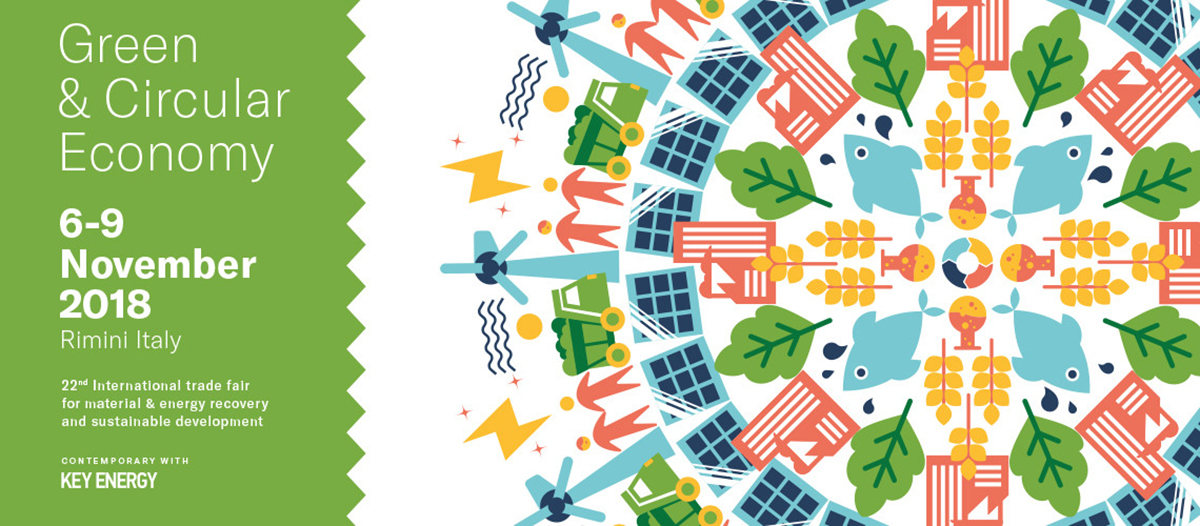
Image © Italian Exhibition Group
This year the event promotes in the foreground the topic of “Circular Economy” that “could help us to pro-actively tackle the crisis caused by a linear economic system, which often appears to be inefficient and expensive, with the aim to separate the economic growth from the exploitment of natural resources”.
We indeed read in the event presentation that: "according to the European Commission, measures such as better planning of materials, products and industrial processes (eco-design) together with prevention and waste recycling could generate by 2030, an outstanding result: a cut of 30% on the usage of raw materials, a reduction of 50% on the total emissions of gas causing the Greenhouse effect, a GDP growth of 5%, and the creation of over 1 million new employment positions.” In fact, “Enabling technologies that are pushing the fourth Industrial revolution could promote the distribution of Circular Economy models and the development of sharing platforms for goods, services and energy efficency. However, in order to successfully promote the transition from a linear to a cirular economic model, we will need ambitious policies, research and innovation and a clear legislative framework, able to give the right signals to investors.” Ambitions that need to be concretized urgently and quickly to respond proactively to a degenerative environmental crisis that is now tangible, before our eyes.
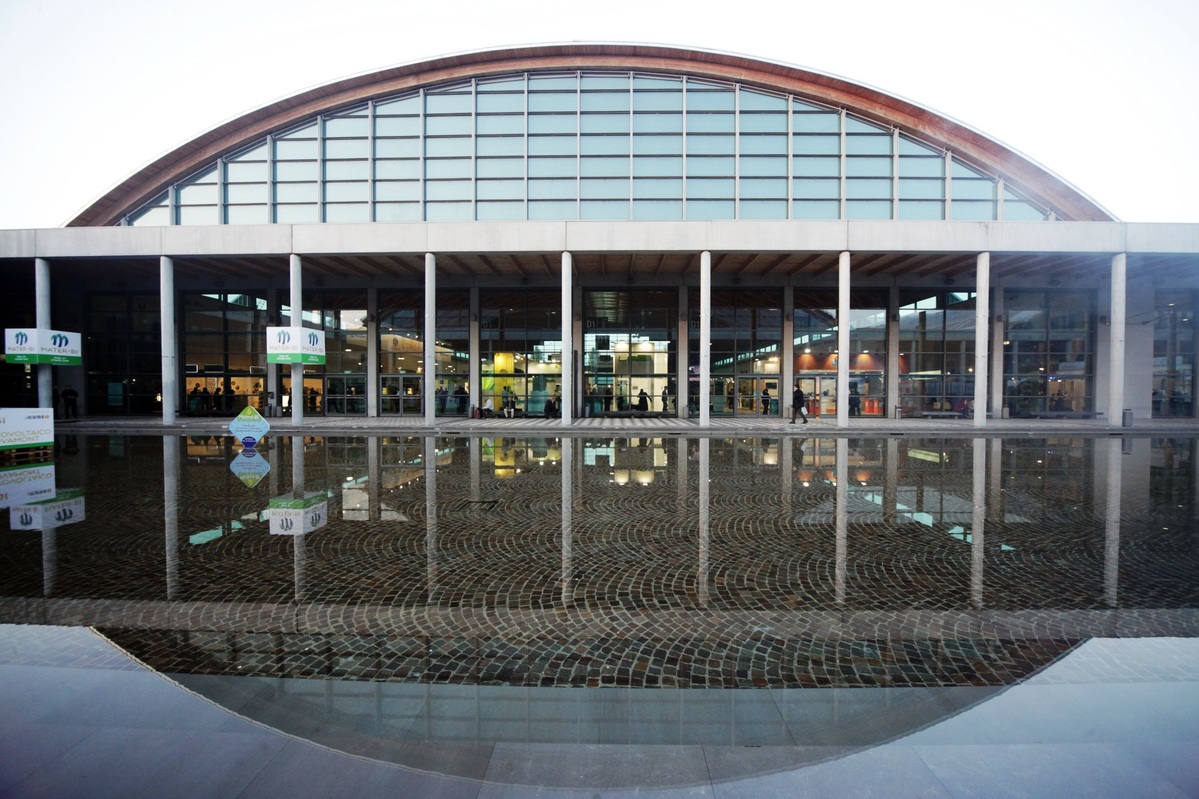
Image © Italian Exhibition Group
We therefore need an immediate application of the best practices, those that can be achieved thanks to the union of the strengths and know-how of those who work in the sector for decades, like many of the companies present at the Event. indeed, some of these operate internationally and have already identified concrete solutions to major problems such as water and climate change. Among these companies we can mention: Arcadis.
A company already present at the Forum PA 2018 "Water and climate change - List of best practices for the management of geological risk" promoted in Rome on May 23 by #Italia Sicura - Presidency of the Council of Ministers, where reported the best Dutch and worldwide practices and strategies for reduction of coastal, fluvial and major storm risks. Examples to be implemented also in Italy, a country rich in impervious and anthropized areas, with a complex orography and a long coastline.

Image © greenroofplan.com
More in detail, Arcadis represents the following structural and non-structural measures. River programs to give to rivers more room to be able to manage higher water levels, including river bypass to reduce the chance of room flooding and retention areas. Artificial marsh zones, through the creation of a variety of water features and vegetation with roots that are submerged permanently or periodically. Floating pavilions, floating houses for low lying areas seeking to adapt to the effects of climate change. Amphibian homes that can provide an important means of defence against rising sea levels and flooding as a result of global warming.
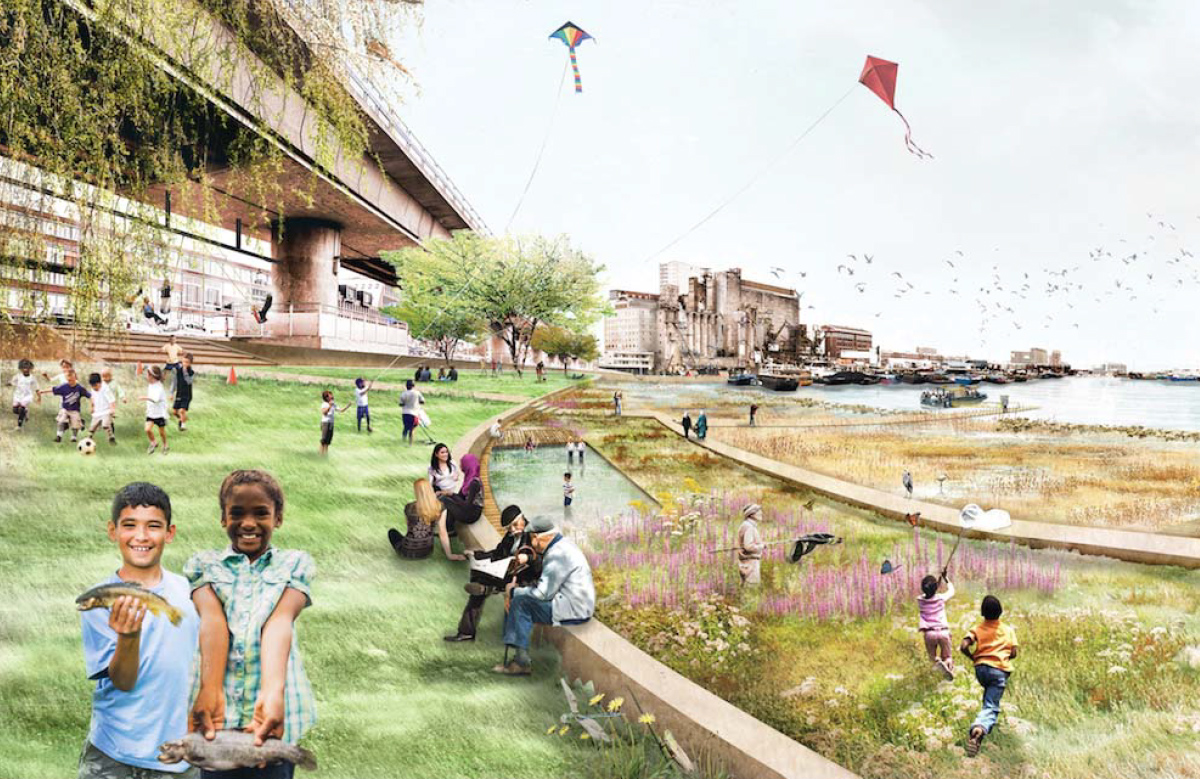
Image courtesy of urbanisten.nl
Removable flood barriers engineered to provide similar levels of protection to permanent flood defences, but with the advantage of being fully removable when not required. Urban waterfront protections through ’hybrid’ structures: combination of a ’hard’ dikes with a soft sandy beaches. Protections that may be integrated with social and community planning.
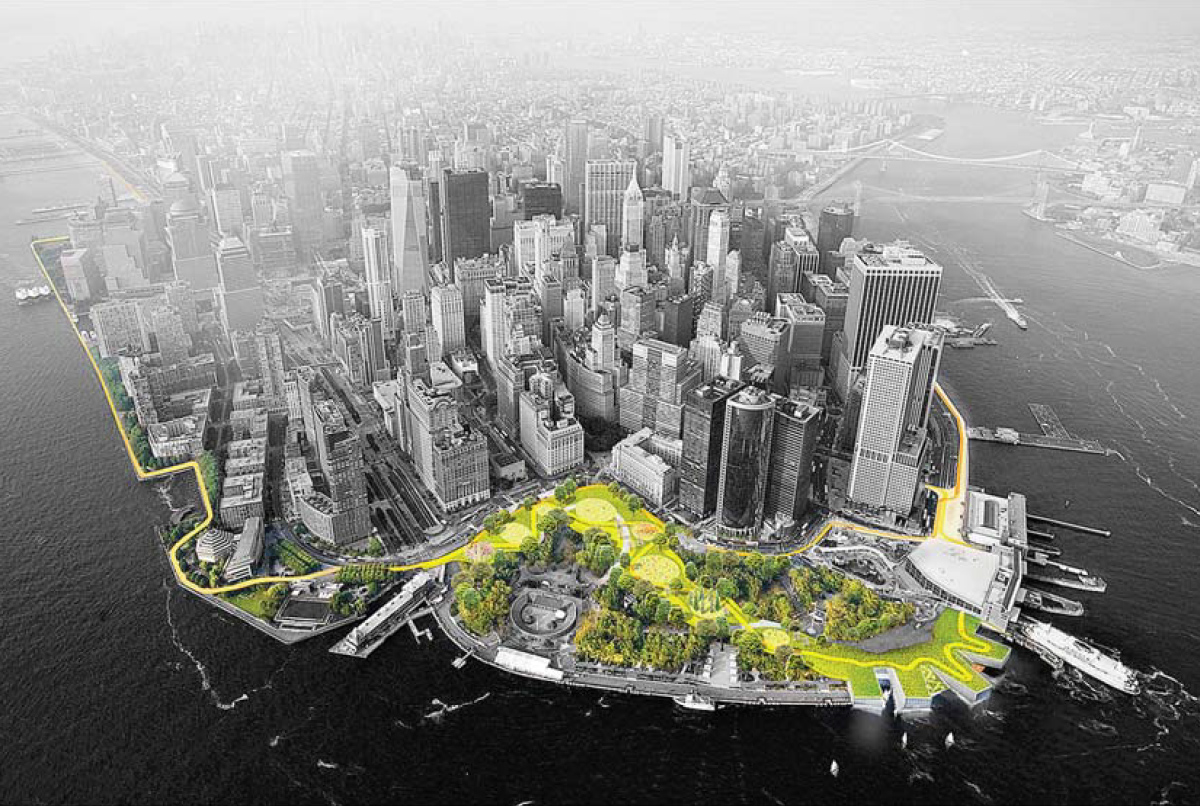
Image © Rebuild By Design
Urban ponds for minimize risks of big storms, with precipitation retained in a pond and used from there. Urban rain gardens as shallow depression planted with deep-rooted native plants and grasses. Bioswales incorporated into the green infrastructures that can also help to enhance biodiversity and quality of life. All strategies that can minimize impervious surfaces, the main reasons for pluvial flooding in urban areas, also creating stormwater storage in structures, underground water storage facility.
These are just some of the examples of the actions necessary for the protection and economic growth of our territory, which will be show as environmental innovation strategies at the Arcadis Italia Ecomondo pavilion with a view to technological and economic sustainability.
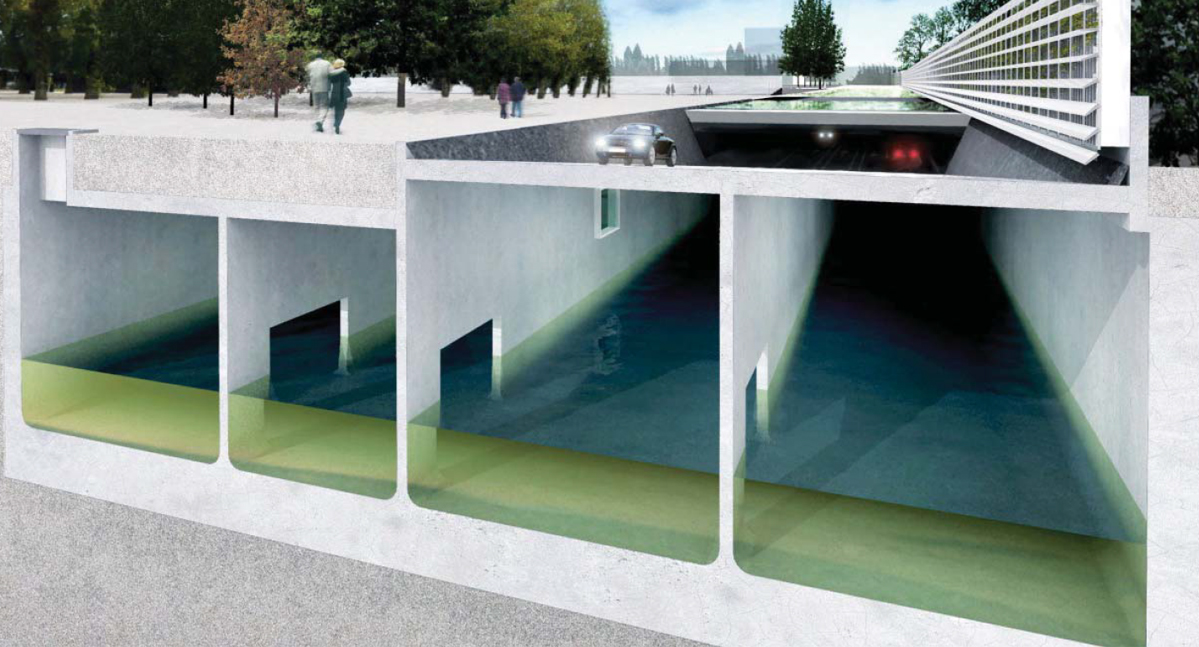
Image © Gemeente Rotterdam
Related to the above topics, on Tuesday, 6 November 2018 at Ecomondo there’s also a specific event in program for “Strategic actions on Coastal Protection to Develop a Sustainable Italian Blue Growth”. An event to go deeper on the current climate changes as strategic issue for a country like Italy, with about 7,500 km of coastline, both for the security of the internal territories, both for the conservation of habitats and coastal ecosystems, both for economic and social development mainly linked to coastal and maritime tourism and to the European strategy of "Blue Growth".
These solutions and ideas, just some examples of the Ecomondo panorama, can inspire concrete solutions with reference to current and future environmental emergencies. At the same time, they can trigger a circular economy process through an interaction between all disciplines: from soil and water protection to resource and material management, from waste treatment to the protection of the atmosphere, from energy efficiency to social and labor policies. In this way, in a positive sight, those action will bring together the priorities and objectives of the fourth industrial revolution for the benefit of our future and our planet.
Top image courtesy of Ecomondo
> via Ecomondo 2018
